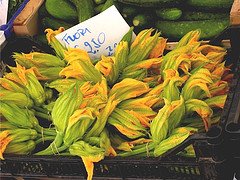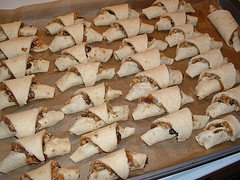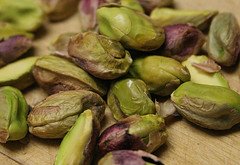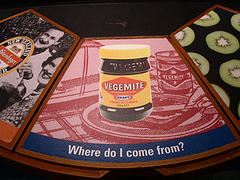Where have all the flowers gone...
 I love visiting fresh produce markets wherever I happen to be in the world; the most exciting so far, were the souks in Turkey and Morocco, closely followed by the floating market of Bangkok and the Tsukiji in Tokyo.
I love visiting fresh produce markets wherever I happen to be in the world; the most exciting so far, were the souks in Turkey and Morocco, closely followed by the floating market of Bangkok and the Tsukiji in Tokyo. Since my Argentine family and friends have introduced me to local vegetables such as acelga (in the chard family) and zapallitos (in the squash family) in the first week of my arrival, these vegetables have become staples in my cooking. It is always exciting to find local produce and to learn how they are cooked within their cultural context. Equally, I like to experiment other ways of using them.
Taking into account some mild dislikes of Guillermo, we find almost all commonly available vegetables here appealing. When I run out of ideas for lunch, a tarta de verdura (vegetable pie) with acelga and some crumbled Feta cheese, encased in a wholemeal crust, usually saves the day. Since Bonnie from Daydream Delicious blogged about her pizza experience, I have also started making pizzas topped with thinly sliced zapallitos or berenjenas (aubergines), followed by a light sprinkling of cheese.
Beetroot, pumpkin, zucchini and fennel are other winter favourites. Sometimes, I simply roast them with a few sprigs of fresh rosemary to go with whatever I happen to be serving as main course, or I make a winter salad of roasted root vegetables dressed with a drizzle of that fragrantly nutty walnut oil and a scant sprinkle of sea salt.
I was watching Monica Cahen d'Anvers' gardening show on El Gourmet channel the other night. She was planting zucchini and pumpkin and saying how well they would grow here. Despite not having a vegetable patch, I was fascinated. Not only because I love both as ingredients, I was also intrigued to find out what happens to the flowers? Well, Monica didn't say.
I find zucchini at the greengrocers' on almost every visit but I can't recall seeing those cheerily yellow zucchini flowers. Maybe I did once in Recoleta but then again, I could have imagined it entirely in my mind's eyes out of sheer wishful thinking.
Zucchini flowers are commonly used in Italian cooking. The cavity is first filled with a mixture of herb and ricotta or soft goat's cheese. The flower with its short stem is then dipped in a feather-light batter and briefly fried. Frying at that level is an art form; the oil has to be fresh and the frying time has to be short so the delicate taste and texture of the flower are not compromised by the smell or heaviness of oil.
I shall make it my mission to investigate the fate of these flowers. I do hope they are used or at least, exported. It would be such a shameful waste to have them thrown back to earth as mulching.
Before I get to the bottom of where have all the flowers gone, I can still put to good use the mixture of herb and ricotta. This is a slightly health conscious adaptation of one ricotta and tomato tart I found in Bill Granger's first cookbook.
I sometimes substitute puff pastry with wholemeal pastry made with olive oil, but both taste great.
375g of puff pastry/ wholemeal pastry (see below)
2 ripe tomatoes, finely sliced
2 cups ricotta
3/4 cup grated parmigiano
2 eggs, lightly beaten
3/4 cup shredded fresh basil
2 tbsp olive oil
salt and pepper, to taste
Preheat the oven to 200C.
Finely slice the tomatoes and then place slices in a colander to drain. Set aside
Roll out the pastry into a round disc, then place it in a greased and floured baking tray.
Place all remaining ingredients, saving a tbsp of egg, in a large bowl and combine well. Now place the ricotta mixture in the middle of the pastry disc and spread it evenly on the pastry, leaving a 5 cm border all round. Use your fingers to lift and push the border up to form a rim.
Arrange the tomato slices on top of the filling and brush pastry and tomatoes with the tbsp of egg. Bake in the oven for 35-45 mins.


























